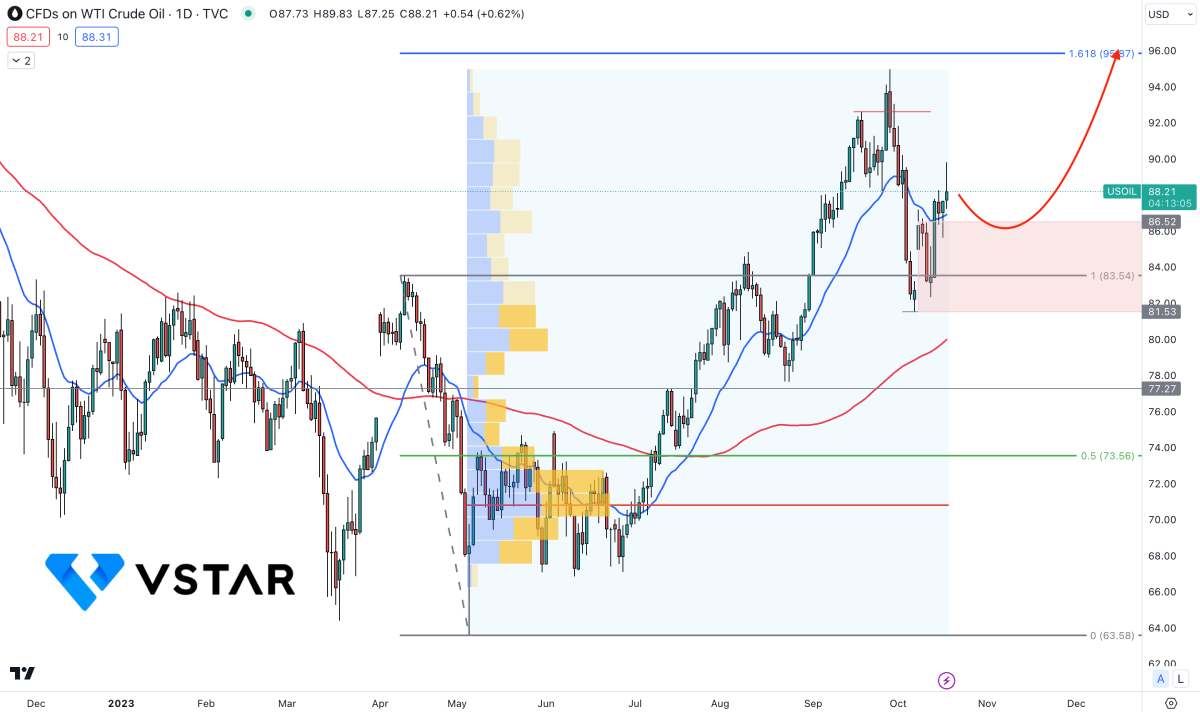On Wednesday, oil prices increased by roughly 2% to reach a two-week high, driven by a larger-than-anticipated decline in U.S. storage and escalating tensions in the Middle East. Iran proposed an oil embargo against Israel due to the escalating conflict, which could threaten global oil supplies.
Consequently, Brent is slated to close at its highest level since September 29, while WTI is poised to close at its highest level since October 3. Both benchmarks experienced an increase of over $3 per barrel earlier in the day.
US Crude Oil Inventory Data Outlook
During the week ending October 13, the U.S. Energy Information Administration (EIA) reported that energy companies extracted 4.5 million barrels of crude from stockpiles. This figure substantially surpassed the 0.3 million barrel draw predicted by analysts in a Reuters poll. It corresponded to the 4.4 million barrel draw observed by the American Petroleum Institute (API), an industry organization.
Notably, this represents the fourth decline in petroleum storage capacity over the past five weeks. It compares to a draw of 1.7 million barrels during the same week last year and a five-year average increase of 2.5 million barrels for this time.
The overall decrease includes a notable decrease of 0.8 million barrels at the Cushing storage facility in Oklahoma, which has reached its lowest level since October 2014. This development has raised concerns regarding the quality of the remaining oil in the tanks and the potential repercussions if oil levels fall below minimum operating levels.
Crude Oil (WTI) Technical Analysis

In the daily chart, WTI Crude Oil trades above the 83.54 static level, which could be a significant area to look at.
Based on the Fibonacci Extension level from the 83.54 high to the 63.58 low, the 161.8% level is marked at the 95.87 level, which could be the primary target of the bull run. Moreover, a new higher high formation at the 93.91 level made the 83.54-95.87 level a new discounted zone.
Moreover, the 100-day Simple Moving Average is below the 81.53 swing low with an upward slope, while the 20-day EMA is the immediate support.
Based on the daily outlook, the ongoing uncertainty from the Middle East could be a key price driver. Currently, the 86.52 to 81.53 are the near-term demand zone, from where bulls could resume the trend.
The primary price target in this upward pressure would be the 95.87 level before reaching the 100.00 level. However, a bearish pressure with a daily close below the 81.00 level could lower the price towards the 74.00 area.

















